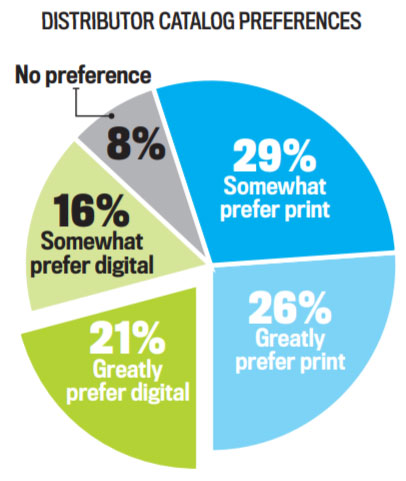July 10, 2019
SOI 2019: Debate: The Future of Promotional Catalogs
Should suppliers only publish digitally?
Ira Neaman, Vantage Apparel (asi/93390)

NO
Suppliers should still print physical catalogs. Here’s why:
More SOI 2019: Back to Main Page
First, consider buyer preference. While new buyers are looking for quick information, suggestions, ordering tools and things that only digital can offer, legacy industry buyers still want a catalog. Focusing on both buyers means doing both. If you look at what’s going on in publishing, e-book sales have been on the decline, and hardback and paperback books show steady increases. Younger generations favor the on-the-go convenience of reading on a mobile phone, while others are reverting to a non-technology experience.
Next, it’s important to appeal to the senses. Print lets you tell a story that can’t be communicated in a five-inch space. The traditional layout of a print catalog allows for creative combinations of images and copy that’s attractive to a buyer, and they’ll be more likely to remember the brand. Paper selection, including weight and finish, is another non-digital opportunity to appeal to senses, communicate quality and position your brand.
“There’s power in face-to-face selling, and print catalogs enhance it.”
Third, remember that there’s power in face-to-face selling, and print catalogs enhance it. Today’s buyers may be more protective of their available time, but meetings are still happening. Catalogs are a tangible representation of a brand and help establish legitimacy. They’re also a better resource when multiple people need access to the same information. It’s easier to share a catalog than your phone, and certainly easier to leave it behind.
Fourth, the phrase “do not disturb” applies here to buyers. They spend more time with your product line when they’re offline – they aren’t distracted by multiple alerts, messages and notifications, and can enjoy the experience of browsing through the ‘book.’ In fact, the act of turning pages is often described as satisfying by many people.

A final thought: Be judicious with print catalog quantities. While printed catalogs are still an effective, economical and entertaining tool, the overall environmental impact is important.
Paul Lage, IMAGEN Brands (asi/47700/93990)

YES
We’ve finally reached the time that physical catalogs have lost their effectiveness as the industry’s primary selling tool for distributor owners, salespeople and end-users.
If you believe the catalog’s primary function is to provide pricing for distributors and end-users, then catalogs aren’t very helpful at all anymore. Most catalogs are simply a marketing tool instead of the all-encompassing selling and ordering bible that distributors used to turn to for buying promo products. In fact, we now steer customers away from the catalog to our websites for updated prices.
Our industry’s history was built on a calendar with prices that would be good for the entire year. To keep that going, suppliers need to make a price determination in October so they can get their catalogs produced to start the next year.
“We need to be able to react quickly to changing market conditions.”
We hold the previous year’s prices until February to help distributors that sold orders at the old cost; this means suppliers must determine prices for a minimum of 15 months. That’s a lifetime in our world. How can anyone predict what’s going to happen with product costs, geopolitical gamesmanship or just the overall competitiveness that impacts our industry for that long?
We need to be able to react quickly to changing market conditions just as every other industry does. This will lead to better and more competitive pricing for all. The recent tariff rollercoaster may be the catalyst for our industry to break away from this century-old printed catalog tradition. We’re seeing several leading suppliers moving in this direction. We’ll all have to rely on developing our distributor relationships, using our industry’s search engines, digital catalogs and creating other tools to promote to distributors and end-buyers. The paradigm might’ve just been busted, and we should all embrace the new opportunities for the future.

SOI data shows the majority of distributors still like physical catalogs.